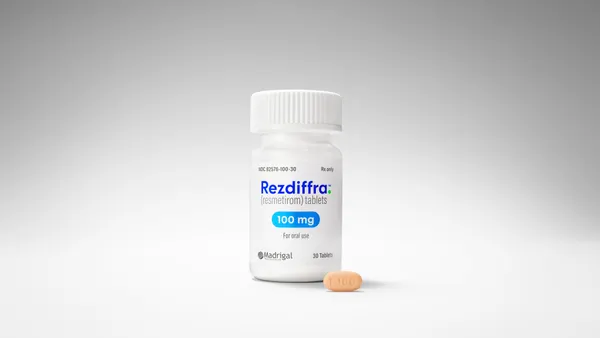GLP-1 drugs have taken the cardiometabolic space by storm. While the popularity of the anti-obesity drugs have created ongoing shortages and increased drugmakers’ investments in R&D, it’s not yet clear how high the market could go in the coming years.
Estimates vary widely, with some analysts predicting the GLP-1 space could top $100 billion or $200 billion by 2030. However, the medicines lack long-term data on weight loss, which could influence how consumers use the drugs in the future and for what diseases.
“If we're really able to sustain weight loss for people who need it, I think the long-term health implications are extremely positive,” said Bill Coyle, global head of biopharma at consulting firm ZS. “And so I'd say we're just at the beginning because we're not seeing the long-term impact yet of what these drugs … can deliver to people with obesity and our health systems. We’re more or less at chapter one.”
Overtaking cardiovascular drugs
While GLP-1s were originally approved for treating diabetes and weight loss, they continue to find new clinical footing in treatment areas including MASH, kidney disease, cardiovascular disease and even addictions to smoking or alcohol. It’s in these other areas where GLP-1s could impact the health system, experts say.
“[If] it's able to show the result in sustained weight loss, then it'll be a no-brainer for payers."

Bill Coyle
Global head of biopharma, ZS
“It's likely that this category of new cardiometabolic drugs could [grow and drive] past some of the current biggest products in cardiovascular,” Coyle said.
The growth of GLP-1s in the cardiovascular space could be similar to SGLT2 inhibitor drugs, which were approved to lower blood sugar in adults with Type 2 diabetes, but also have been found to improve cardiovascular health.
In 2021, Eli Lilly and Boehringer Ingelheim’s SGLT2 inhibitor Jardiance was approved by the FDA to treat heart failure. The drug has become a blockbuster and generated $2.7 billion in revenue in 2023.
While Ely Lilly’s GLP-1 Mounjaro, which surpassed $5 billion in revenue last year, hasn’t been approved yet to treat cardiovascular diseases, Novo Nordisk’s Wegovy was approved for heart disease in March. Novo also made its intent for the cardio market clear when it said last month it was acquiring German cardiovascular specialist Cardior Pharmaceuticals for more than $1 billion.
“With GLP-1s delivering major adverse cardiovascular event risk reduction, and because the drugs do so many things for patients who often [have multiple morbidities].... I'd expect them to grow quite strongly because of their positive cardiovascular effects,” Coyle said.
A mix of cardio cures
Heart disease is the leading cause of death for men and women in the U.S., with cardiovascular disease rates increasing as obesity rates rise. While there are already numerous drugs to treat heart disease and GLP-1s could play a role in the cardiovascular drug market, they likely aren’t the end-all answer.
“We have lots of good drugs … statins, ACE inhibitors, ARBs,” Coyle said. “[These] keep people's cholesterol down, keep people's blood pressure down, but even with those drugs you've seen a plateauing of outcomes. That gets to other factors — lifestyle, factors around non-compliance, early detection and diagnosis and education … That highlights [that] just drugs aren't the answer.”
The ultimate goal, however, should be to tackle cardiovascular disease earlier in a patient’s journey by addressing the risk factors, which includes obesity. As more long-term data comes out about GLP-1s and the impact on sustained weight loss, this could influence more insurers to cover the medications, which is a current challenge for many users. One recent survey of employers found only 27% covered GLP-1s for weight loss, while another 13% of plan sponsors were considering adding coverage.
“[If] it's able to show the result in sustained weight loss, then it'll be a no-brainer for payers,” Coyle said.











